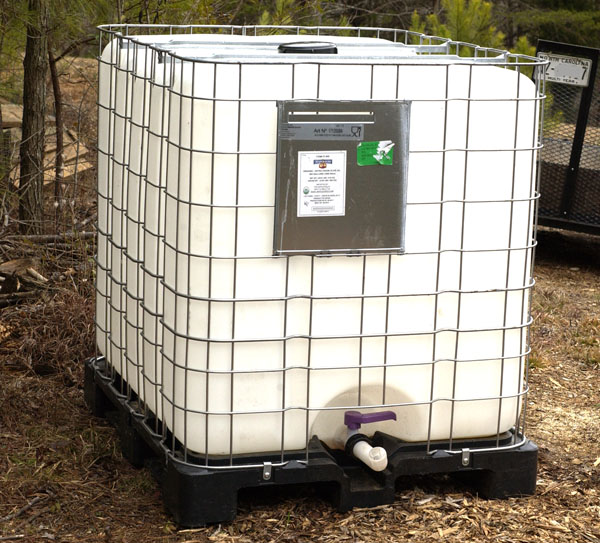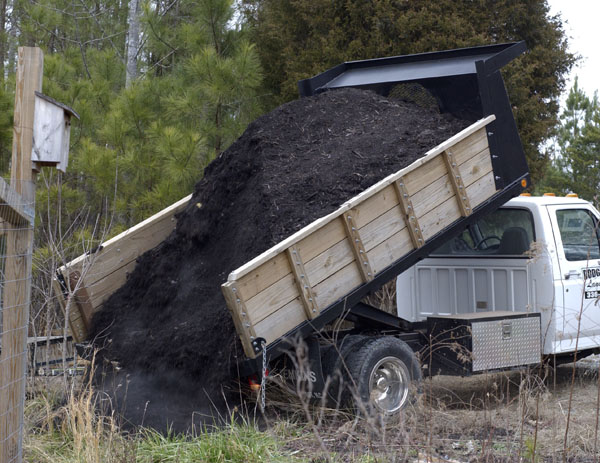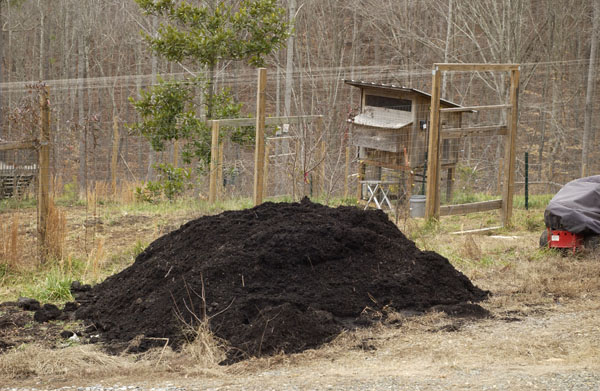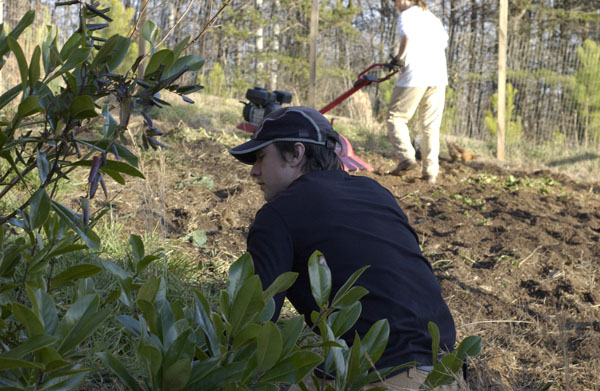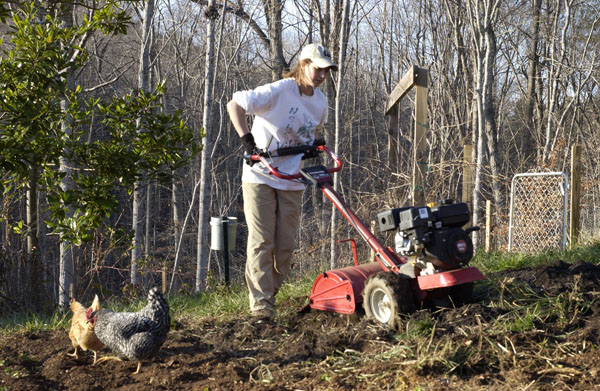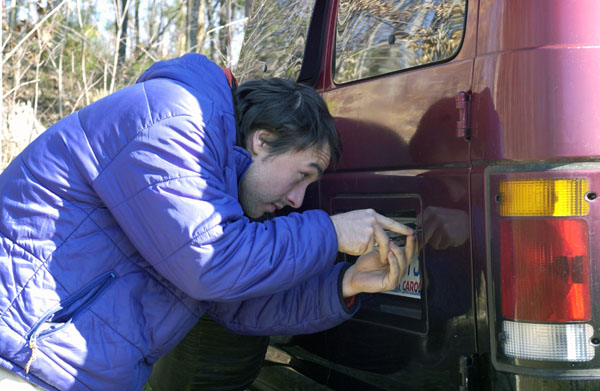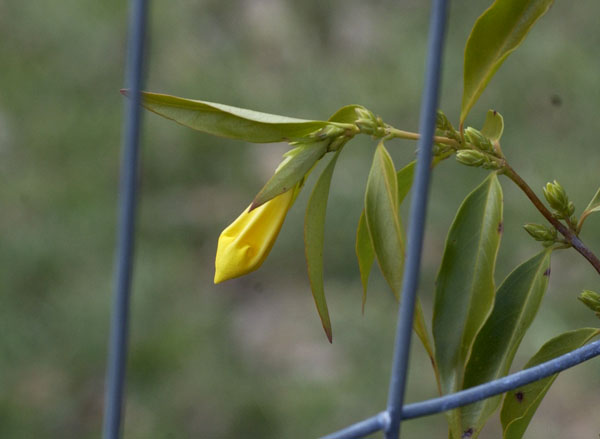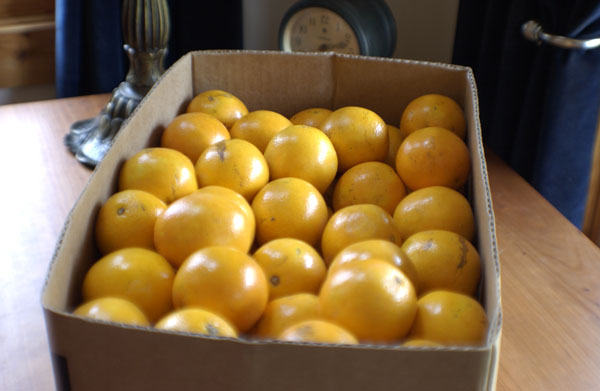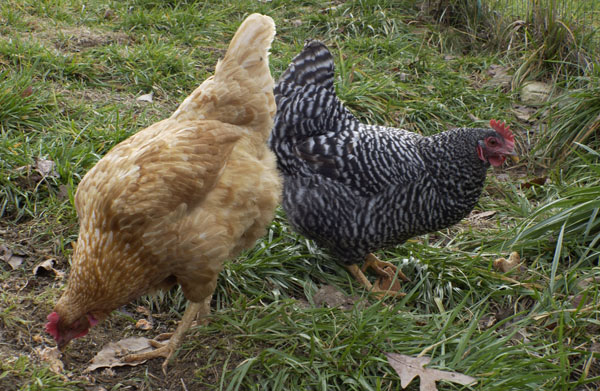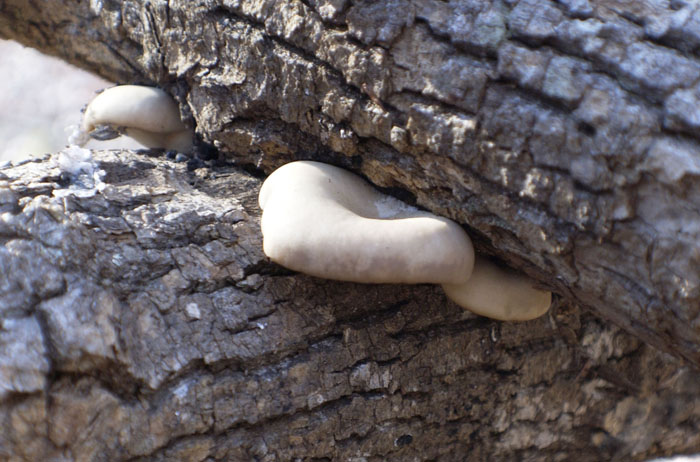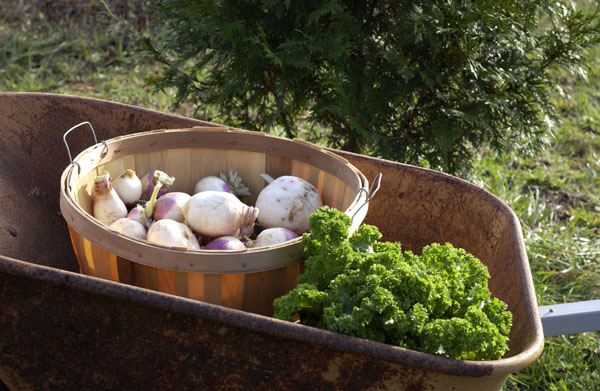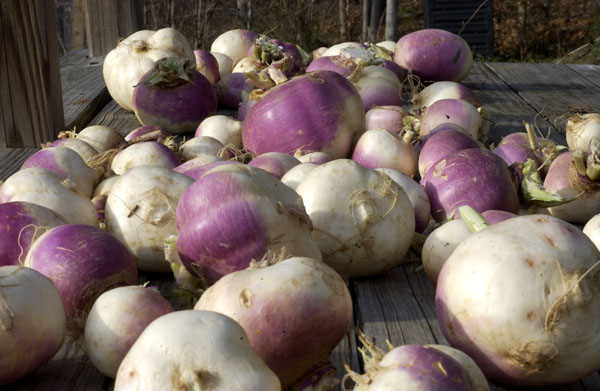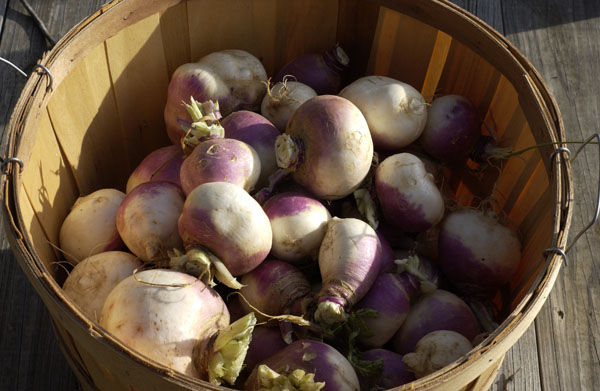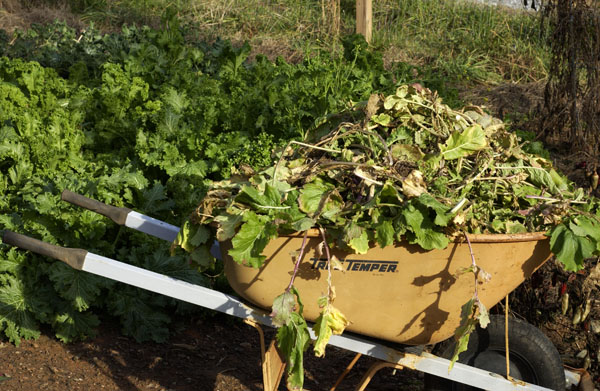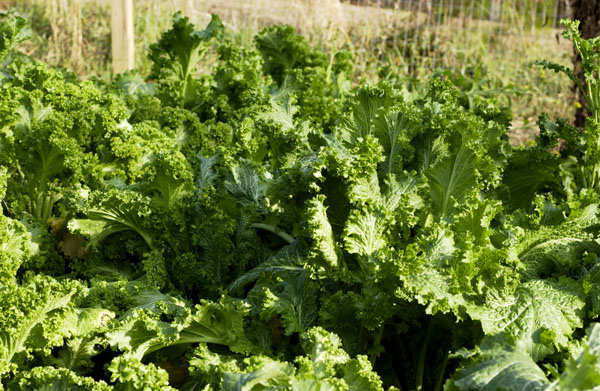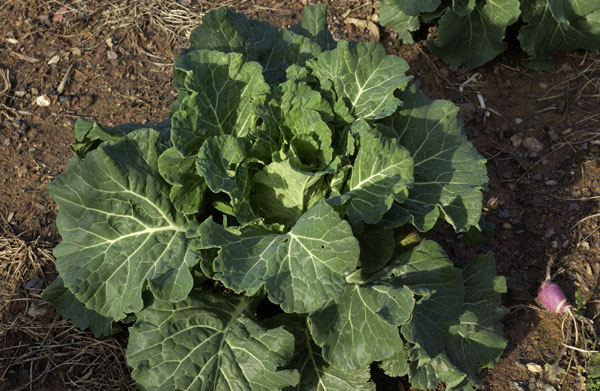I finally found a tote tank to store water for the garden’s irrigation system. The irrigation system is a work in progress, and I’ll have photos of that when the project is done.
Tote tanks are much less expensive than the water tanks sold by agricultural suppliers. When you buy one, you’re also recycling it. Otherwise, I assume, they’re industrial waste.
Tote tanks are a product of globalization. They’re how high-value fluids are shipped around the world. They’re designed to be easily moved by a fork lift, and no doubt there is some special means of stacking them on container ships. Some — probably most — of the tanks are used for toxic fluids such as industrial lubricants. But some of them are used for food. That’s the trick. It took me months to find a tote tank that I could verify was made of food-grade plastic and that had not contained anything toxic. This particular tank contained organic olive imported from Spain. The man I bought it from didn’t want to tell me the name of the company he buys them from, because he wants to protect his access to these hard-to-find items. But he did say that he gets them from a company that makes products such as salad dressings.
If you’re looking for a tote tank, check for a label. There always should be a label saying what was in the tank. Personally I would not buy a tank if the label has been removed. In the photo below, note the glass-and-fork icon put there by the Spanish manufacturer of the tank. I believe that icon indicates that the tank is made of food-grade plastics.
Around here they sell for $65 to $100, depending on the condition and whether it’s food grade. They hold about 275 gallons, or 1,000 liters.

